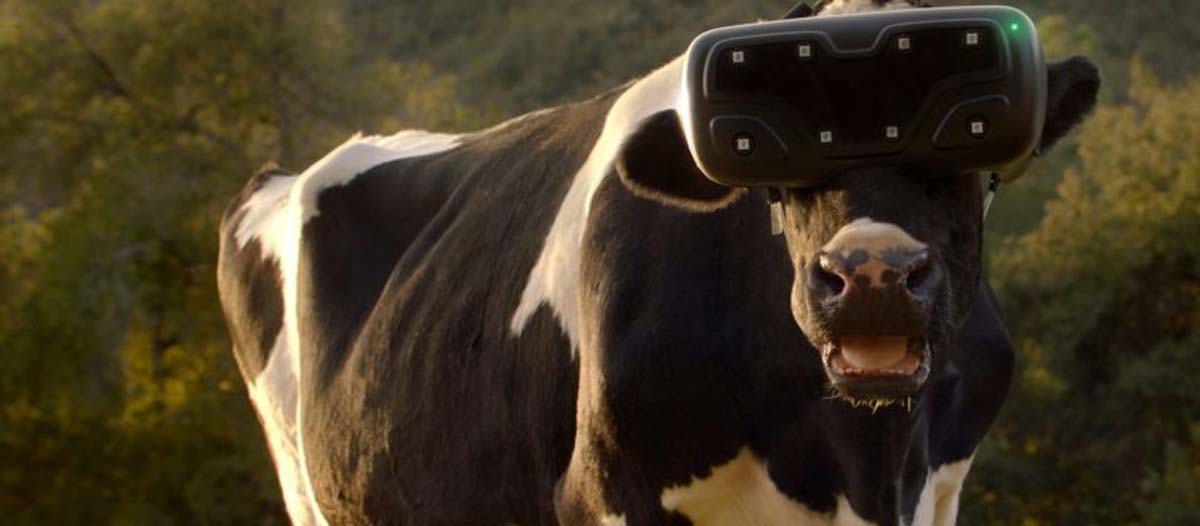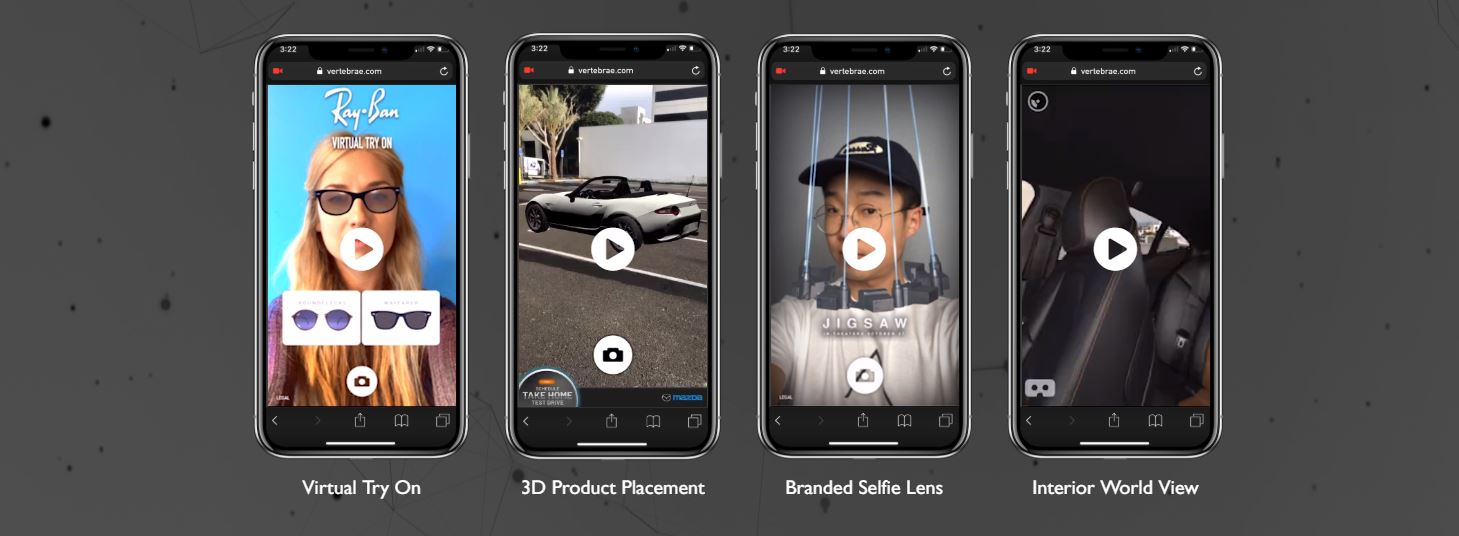As the relevance of web browser ads fades and other types of mobile advertising lose their potency due to overuse and Facebook advertising transparency initiatives, marketers are exploring a new area of advertising — virtual reality (VR) and augmented reality (AR).
In 2016, several companies implemented early AR/VR technology, including McDonalds, which created a Happy Meal box that could transform into a VR device, usable when paired with a smartphone. In late 2017, Chick-fil-A rolled out a VR website featuring skiing, deep-sea diving, race car driving, and skydiving. Perhaps the most terrifying use of virtual reality advertising was the immersive VR trailer for ‘IT‘, the Stephen King horror film featuring Pennywise the clown.

source: VR Scout
In early 2018, the speed of VR/AR development in the marketing sector has ramped up, spurred by growing content availability and device accessibility. The future of digital advertising is changing as marketers look for new ways to bring their products to the eyes of consumers.
Within this article, we will explore some of the current options for VR/AR advertising, and find out how to keep marketing relevant with Adverty, a solution that Digital Newsroom Media dubbed “the world’s first platform for programmatic native advertising to AR and VR.”
3 current options for trying VR/AR advertising
Vertebrae
With Vertebrae, companies can either achieve native ad insertion in an already constructed VR space, or they can build a completely immersive ad using the company’s AR/VR engine. One aspect where Vertebrae shines is in immersive experiences, such as those examples shown in the below graphic: virtually trying on a pair of sunglasses, branded selfie overlays, seeing inside an automobile, etc. Plus, the platform offers plenty of insight into consumer engagement with the ad.
source: Vertebrae
Vertebrae’s software development kit enables quick drag-and-drop insertion of business’s ads into the established VR experience. The ad might activate when the user looks at it, take the form of a video, or involve product placement in the VR space. The Vertebrae website provides plenty of details about the available features and formats.
Adverty
Adverty is potentially the most exciting AR/VR advertising option for developers, with its Supply-Side Platform (SSP) that includes plenty of options for ad-mapping within a 3D space. According to MarTech Today, the Stockholm-based company claims to offer “the first programmatic ad platform for augmented reality (AR) and virtual reality (VR) native ads.”
Working with the Coca-Cola company has been Adverty’s biggest claim to fame to date; and the startup also enjoys a partnership with Angry Birds game creators Rovio Entertainment. Adverty’s YouTube channel includes several sample videos, showing off how advertisers can use the platform to involve consumers and introduce products. Currently, Adverty only permits 2D VR or AR ad insertion into an existing environment; but the company is working on additional channels to permit fully immersive 3D VR and AR ads.
Guide: How to advertise with Adverty in 7 steps
Compared to the other options, Adverty offers a simpler solution to AR/VR advertising. As of the publication of this article, I’m covering Adverty in this guide because it is the only AR/VR advertising platform that has easy-to-use advertising options for marketers. Unlike the other two platforms, which require high advertising budgets and agency help to launch your immersive experience, Adverty has a system that is much more available.
The platform is practically turn-key for marketers and developers, which is a good thing for companies just beginning to dip their toes in the pool of AR/VR advertising. Here’s how to get started.
Step 1. Understand the scope of Adverty.
Right now, Adverty primarily works with game apps, although its system can be used with other types of apps as well. The system is two-pronged, featuring one platform for mobile augmented reality (objects enhancing a real-world environment) and another for genuine virtual reality (a fully immersive experience).
Adverty works on any major device, including headsets. You can implement it across consoles, smartphones, tablets, desktops, laptops — you name it. As a platform, it’s entirely device agnostic.
Step 2. Build the app.
To use Adverty, you first need to have an app developed using the Unity and Unreal game engine. You can use an in-house app developer if you have one on your marketing team, or you can hire someone to develop the app for you.
Step 3. Plan the ad content.
Your team will need to plan the ads you want to be included within environment. To broaden your vision and get an idea of what’s possible, view ads that other companies have done using virtual and augmented realities, like the Coke game “Merry Snowballs,” produced with Adverty. How can you adapt some of those ideas to your company’s brand and products?
Step 4: Integrate the advertising.
After your developer attaches the Adverty SDK to the Unity engine, from there it’s an easy drag-and-drop process to include the ad units within the virtual environment you’ve constructed. Plus, the developer can quickly and easily modify those ad elements within the app to ensure that they function creatively and interactively.
Step 5. Calculate the cost.
Adverty charges you for your ad per view or “brain impression,” and the charge only occurs after “the ads have been fully perceived by the consumer,” according to Adverty’s website. A tool called ImpViz, already packed in the Adverty kit, collects the data when ads are activated and gauges the real-time impressions.
Step 6. Roll out the experience.
Now it’s time to push out your newly created VR/AR app to your target audience! Adverty offers context-based targeting with their new SceneContext feature, which allows you to pinpoint the users, locations, platforms, hardware, or content types you want to reach with your new ad.
Step 7. Collect and analyze the data.
Thanks to Adverty, you’ll have complete statistics and analysis at your fingertips; so you’ll be able to see how well the VR experience plays with your target audience.
You’ll get next-level analytics “with in-depth performance insights to break down ad spend or ad revenue by geo, location, scenario, ad types and devices,” according to the company website. “How long did users on average look at an ad? Where did they stand? Did they return back to the ad? During what times of the day? In which countries and cities? We have all the answers.”
Your role in AR/VR marketing
Marketing is an ever-changing field, and it has only become more dynamic and volatile in the digital era. To stay relevant and to keep your brand current in the eyes of your customers, you need to evolve— and that means pursuing new possibilities as they arise.
With virtual reality and augmented reality, you have the opportunity to reach an audience that is already engaged and excited about what they’re experiencing. Why not tap into that enthusiasm? Learning how to leverage AR/VR today is making an investment in the future of your brand. That, and it will be a killer skill to add to your LinkedIn profile and resume; one that will get you further job opportunities.








